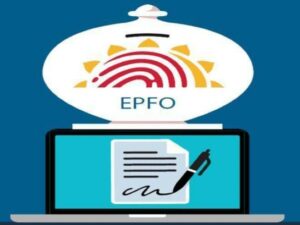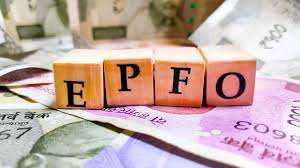Know the difference between Advance and Loan
Every now and then, individuals may need urgent financial aid. It can be due to a medical emergency, facing a shortfall while planning a wedding, or not having enough funds to purchase a house. This urgent need can be addressed by borrowing the required funds.
Employed individuals can borrow funds by either applying for a secured loan or a personal loan. They can also avail themselves of an advance by approaching a lending institution or their employer.
While both forms of borrowing may solve the financial crisis, it is crucial to understand the difference between an advance and a loan to know which would work better for you.
What is an Advance?
An advance and a loan differ from one another in many aspects. Essentially, an advance is a credit facility for short-term concerns. Banks and financial institutions may offer an advance to customers to cover their immediate requirements, usually in the next year. Employers can also give their employees an advance on their salaries to cover any urgent financial need.
What is a Loan?
Secured or unsecured personal loans are defined as a mutual contract between the lender and the borrower. As a part of the agreement, the lender charges interest on the loan amount, whereas the borrower repays the debt in easy installments through a fixed tenure.
One of the upsides to availing a personal loan is that the borrower does not need to pledge any security against the loan availed. Borrowers can also apply for the best loans online, which may not be the case with secured loans.
Difference between Advance and Loan
Formality :
The first difference between a loan and an advance is the procedure. Loans follow a more detailed process where the borrower’s income, profession, employment history, etc. are considered before approval. Cash advance loans, on the other hand, are pretty straightforward. They are based on a mutual understanding between the lender and borrower and do not follow such an elaborate process.
Loan Amount :
Loans are generally of a higher value as they are used for specific financial needs. For instance, a personal loan from Finnable can range from Rs. 50,000 to Rs. 10 lakhs and can be used for travel, wedding home renovation, etc. An advance is used to cover smaller monetary requirements and is, therefore, of a lower value.
Repayment :
As most secured or easy personal loans are of a higher value, they tend to have a long repayment term lasting from a few months to several years. Advances can have a repayment term of up to a year.
Interest Rate :
Another difference between an advance and a loan is the rate of interest charged on both. Loans usually have higher interest rates as compared to advances to balance the risk for the lender. Advances typically carry no or low-interest rates as the amount and tenure of the credit are low.
Security :
A loan may or may not require collateral. Personal loans are unsecured loans that do not require the borrower to pledge any collateral. However, borrowers will be required to pledge an asset against a secured loan like a home loan. This may also be the case while availing an advance, where the lender may request security, such as a fixed deposit. Cash advance loans are typically given in lieu of something that has monetary value. Be it a bank deposit, salary at employment or any other such instrument.
What are the types of Advances and Loans?
To understand the difference between advance and loan, it is essential to know the various types of personal loans and advances.

Types of Loans
Secured loans:
While availing a secured loan, the lender tends to ask for collateral. Secured loans are usually of very high value, such as a home loan.
Unsecured loans:
Loans without collateral are known as unsecured loans. An unsecured loan is usually a personal loan. Unlike secured loans, personal loans or quick online loans can be applied for by individuals from the comfort of their homes. The disbursals are quick and require minimal documentation.
- Term loan:
A term loan has a fixed term, during which the borrower must repay the debt. These may be categorised as mid and long-term loans. Participation Loan:
Some loans may involve very high risk. In such a case, the loan is offered by two lenders in participation.
Types of Advances
Cash credit:
This form of advance offers a fixed credit limit. The individual can withdraw up to the approved limit as and when required. The interest is charged only on the withdrawn amount and not on the approved credit limit. Individuals can also apply for cash advance loans online.
Overdraft:
An overdraft is an advance that an individual can withdraw over the credit balance in their account up to a specific limit.

Conclusion
There are many points of difference between advance and loan, and they both cater to distinct needs. However, a loan may be a more comprehensive solution to specific monetary concerns. Moreover, loans offer goal-based solutions in the form of travel loans, medical loans, personal loans, etc.
Individuals can avail the best online loan from Finnable. Borrowers can apply for an instant loan either through Finnable’s website or app in 3 easy steps.
All they would need to submit is their Aadhar card, PAN card, bank statement, and income slip. Once the documents are verified, the loan amount is credited within 6 hours into the borrower’s bank account.
Learn with Finnable
People Also Search For
How To Check Cibil Score | What Is Emi | How To Improve Cibil Score | Instant Loan Without CIBIL | What Is E Mandate | Difference Between Secured And Unsecured Loans | Types Of Unsecured Loans | Personal Loan Tenure | Home Loan Vs Personal Loan | Education Loan For MBBS | Importance Of Credit Rating | Personal Loan Vs Gold Loan | Importance Of Credit Rating | Personal Loan Benefits | Get Instant Loan Of 50000 | Education Loan Benefits | Types Of Personal Loan | Personal Loan For CIBIL Score of 700 | What Is Personal Loan | Personal loan for 20000 salary | Personal Loan On Aadhar Card | What Is Good Cibil Score | Personal Loan Rejection Reasons | What Is Loan Repayment



















